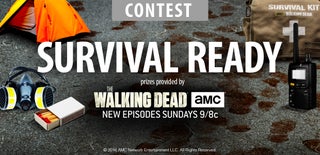Introduction: Survival Commando Wire Saw
Whether you are backpacking, or in trouble and trying to survive, every piece of equipment has to be worth its weight. Ease of carry is another all important factor in what to take with you. Todays Special Forces have perfected this problem in their equipment, and in particular their survival gear. One such tool is the wire saw, a simple piece of braided or twisted wire with "teeth", and a metal ring at each end. This will show you how to improvise an effective wire saw out of barbed wire which can go through dry or green wood with ease.
Materials needed;
Piece of barbed wire 46" long
two sticks for handles
Tools needed
wire cutters
pliers
work gloves
safety glasses
( I used a leatherman multi tool only when making this and it worked great)
Step 1: Prepare the Wire
First, cut your piece of barbed wire around 46" long, this will allow you to use 5" on each end to make loops for the handles to go in, and the remaining 36" can be used for cutting. Cut each barb almost down to where it wraps around the wire as the one on the left in the above photo. Long barbs will snag on the wood making cutting nearly impossible. It will be much easier to handle the wire for the rest of the project if the barbs are cut down first.
Next, untwist 5" of wire on each end. If there are any barbs on this part of the wire they will need to be removed by being untwisted, or if they are not wrapped to tight, slid off the ends.
Step 2: Loops and Handles
Loop the untwisted wire around a stick, around 1/2" across. Then push the wire through the v shape formed by untwisting the wire. Pull each end around the wire and twist them to close the loop. Handles will consist of a good sturdy stick which need not be carried, but can be picked up in the field whenever the saw needs to be used. D rings can also be used on the ends for the handles but the wire loops will grip the stick handles much better.
Handles are necessary to allow you to apply enough pressure to make a cut. They can be as short or as long as you like. Grip the saw with the wire coming out between your fingers.
Step 3: Using the Saw
With handles in place, loop the saw around a branch, sapling or whatever you will be cutting and pull the handles side to side. If you are cutting a branch that has already fallen, a tree with a fork in it will work as well as a vice for hold it until it is cut through. This piece is dry Poplar about 2" thick. I made this cut in under a minute and it goes remarkably straight and smooth. The barbs also hold up really well after cutting.
This simple tool which weighs a few ounces can provide you with hundreds of pounds of wood which can be used for many things, some of which are staves for making shelters, and if the only fallen wood you can find is wet, green pine branches are easily cut and burn very well.
It can also provide you with a fishing pole or spear for supplying food, and can even help make improvised medical devices such as wood for splints or when paired with rope and a blanket, make an improvised litter for carrying a wounded party member.
Step 4: Safety Information
The last thing you need to do when you do not have access to help is to injure yourself, so here are a few safety tips.
Do not stand under a branch while sawing it off! Even if you think you can move when it starts to crack, imperfections in the wood can cause it to break suddenly. This hurts.
If you are cutting off a sapling, use para cord or rope tied to the top of it and applying tension to pull it away from you when it falls.
A saw cutting through wood, causes a lot of friction, friction causes heat, heat causes burns. Don't touch the wire after cutting, it will burn you.
I hope this proves interesting and helpful to you, though I certainly hope you never have to use it to survive. As with anything you use in survival, practice with it over and over again until you fully understand how it will work, and what its limitations are. You never want to go out with a piece of equipment that you know how to use, you want to be experienced with it.
This author is Not responsible for any loss or injury or damage of any kind associated with this tool.

Participated in the
Survival Ready Contest













